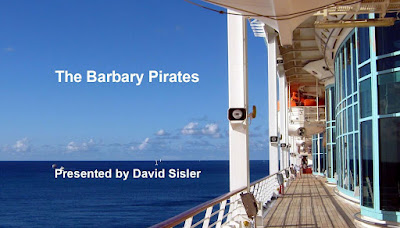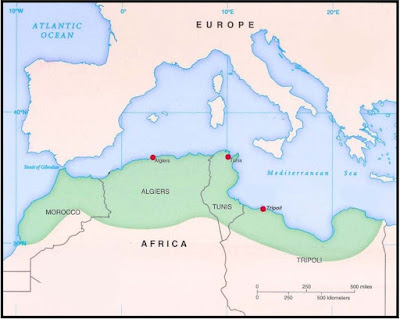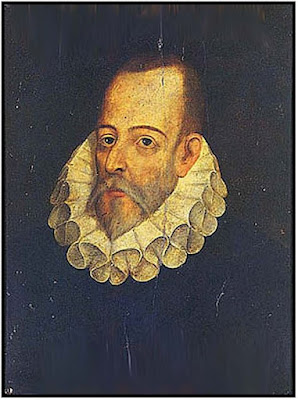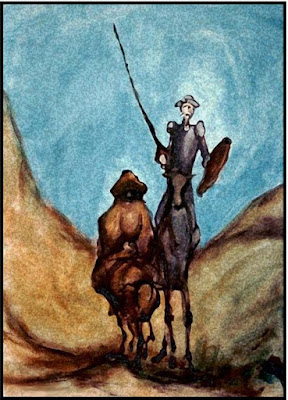November 6, 2021
By special request, for the next several Saturdays we will be sharing the story of the Barbary Pirates.
The last time I did this talk, someone accused me of being “jingoistic.” I had to look it up: “characterized by extreme patriotism, especially in the form of aggressive or warlike foreign policy.”
“Extreme patriotism.” Guilty. As you read these blogs, you will see my unabashed, unashamed, undiluted patriotism. The Barbary Pirates were Islamic terrorists. Period. Precursors of the terrorists who killed 3,000 of us on 9/11. Period. The United States was fighting for its survival. And we sent in the Marines. The next time I do this talk, I won’t change a word.
“Aggressive or warlike foreign policy.” Above my pay grade.
America’s first confrontation with the Islamic world helped forge the new nation’s character. When talking about the Barbary Pirates, we are most familiar with names such as James Cathcart, John Paul Jones, Joel Barlow, Yusuf Karamanli, Stephen Decatur, and William Eaton. Ships like USS Enterprise, USS Philadelphia, and USS Intrepid played key rolls. One unforgetable tune, sung at first with words we today do not recognize, and one hymn were penned during the years of the Barbary Wars.
 |
| Stephen Decatur, in the officer's jacket in the foreground, at the Battle of Tripoli. |
The Barbary pirates operated from North Africa, based primarily in the ports of Tunis, Tripoli and Algiers. This area was known in Europe as the Barbary Coast, a term derived from the name of the local inhabitants called Berbers.
Their raids extended throughout the Mediterranean, south along West Africa’s Atlantic seaboard and even South America, and into the North Atlantic as far north as Iceland. The main purpose of their attacks was to capture slaves for the Islamic market in North Africa and the Middle East.
The Barbary pirates captured thousands of ships, and long stretches of coast in Spain and Italy were almost completely abandoned by their inhabitants, discouraging settlement until the 19th century. Between 1530 and 1780, the pirates captured an estimated 1.5 million people as slaves.
In 1575, Miguel de Cervantes, who was serving in the Spanish navy, was captured by Algerian pirates and spent 5 years as a slave before he was ransomed by his family and the Trinitarians, a Catholic society that worked to ransom slaves from the Barbary Pirates.
It is believed that his life as a slave from 1575 to 1580 became the source of inspiration for some episodes in Don Quixote – considered the first modern European novel.
The Sack of Baltimore took place on June 20, 1631, when the village of Baltimore, West Cork, Ireland, was attacked by Barbary pirates.
 |
| You knew I would. |
The attack was the biggest single attack by the Barbary pirates on Ireland or Britain.
Led by a Dutch captain turned pirate, Jan Janszoon van Haarlem, the pirates captured 108 English settlers, who worked in the sardine industry in the village. Some local Irish people were taken as well.
The villagers were put in irons and taken to a life of slavery in North Africa. Some prisoners were destined to live out their days as galley slaves, while others would spend long years in the seclusion of the Sultan’s harem or within the walls of the Sultan’s palace as laborers. Records show only three of them returning to Ireland.
It has been suggested a British citizen orchestrated the raid to gain control of the village and the prosperous sardine industry from a local Gaelic chieftain.
Before we get more people and ships captured, there is one additional piece of background information that will be important to the United States in its first days of an independent nation.
The Treaty of Paris which was signed on September 3, 1783, ended the American War for Independence from Great Britain. Before the war for independence Americans traded safely in the Mediterranean under the protection purchased for all British subjects by the government in London. American peace negotiators tried to persuade the British to continue this service for independent Yankee shipping.
The majority of British statesmen agreed with the influential publicist Lord Sheffield that the upstart Americans should be punished by the most severe economic policy that Parliament could devise. Sheffield wrote in 1783 that the United States would not “have a very free trade in the Mediterranean; it will not be the interest of any of the great maritime powers to protect them there from the Barbary States.”
American diplomats asked France to guard the new nation’s Mediterranean trade. The French promised only to provide their “good offices” when the United States dealt with the Barbary states. The cost of good offices to France and the benefit to the United States were the same: zero.
Henceforth, the United States was on her own, and the Pirates quickly took advantage of the situation
Congress instructed Benjamin Franklin, John Adams, and Thomas Jefferson to negotiate with the Barbary states, but all of their entreaties were rejected.
On October 11, 1784, Moroccan pirates seized the brigantine Betsey. The Spanish government negotiated the freedom of the captured ship and crew; however, Spain offered advice to the United States over how to deal with the Barbary States. The advice was to offer tribute to prevent further attacks against merchant ships.
Thomas Jefferson was able to conclude a treat with Morocco on June 23, 1786, which formally ended all Moroccan piracy against American shipping interests.
American diplomatic action with Algeria, the other major Barbary Coast state, was not successful.
Algeria began piracy against the U.S. on July 25, 1785 with the capture of the schooner Maria and the Dauphin a week later. In a bold attempt to take advantage of the new nation the ransom demand was presented at the “standard rate.”
The “standard rate” was $6,000 for a captain, the first mate was $4,000, and sailors were $1,400. Assuming two captains, two mates, and 17 sailors, the total ransom would have been $43,800. The first American envoy was authorized to pay $200 per man – or $4200.
The twenty-one officers and men of the two vessels were carried to Algiers and slavery where they would remain in captivity for over a decade, and soon were joined by other ships captured by the Barbary States.
Next week, the story James Cathcart and 21 captured sailors and their 11 years in captivity.
👉 Before today’s close, a reminder: Fall Back tonight. Unless you are in Arizona or Hawaii. Set your clocks back one hour and get an extra hour of sleep.
👉 Today’s close is from Praying with the Psalms, by Eugene H. Peterson.
“Lift up your heads, O gates! and be lifted up, O ancient doors! that the King of glory may come in. Who is the King of glory? The Lord, strong and mighty, the Lord, mighty in battle” (Psalm 24:7-8).
Something like this happens every time Christians gather in worship: we come to “seek the face of ... God.” God, the “King of glory,” comes to greet us and bless us in Jesus Christ. The church at worship, with heads lifted up in expectation, is at the summit of earth’s fullness.
Prayer: Almighty God, when I next assemble with fellow Christians in worship, grant that I may not be so taken up with my own plans and anxieties that I miss the proclamation of your presence at the gates and your entrance into our midst as the King of Glory. Amen.
-30-











No comments:
Post a Comment